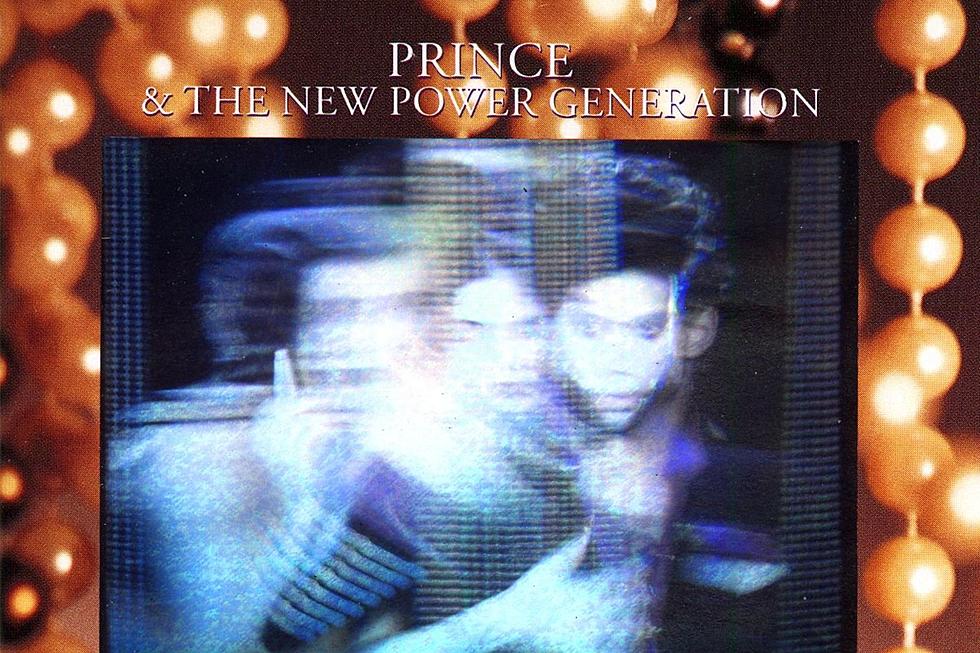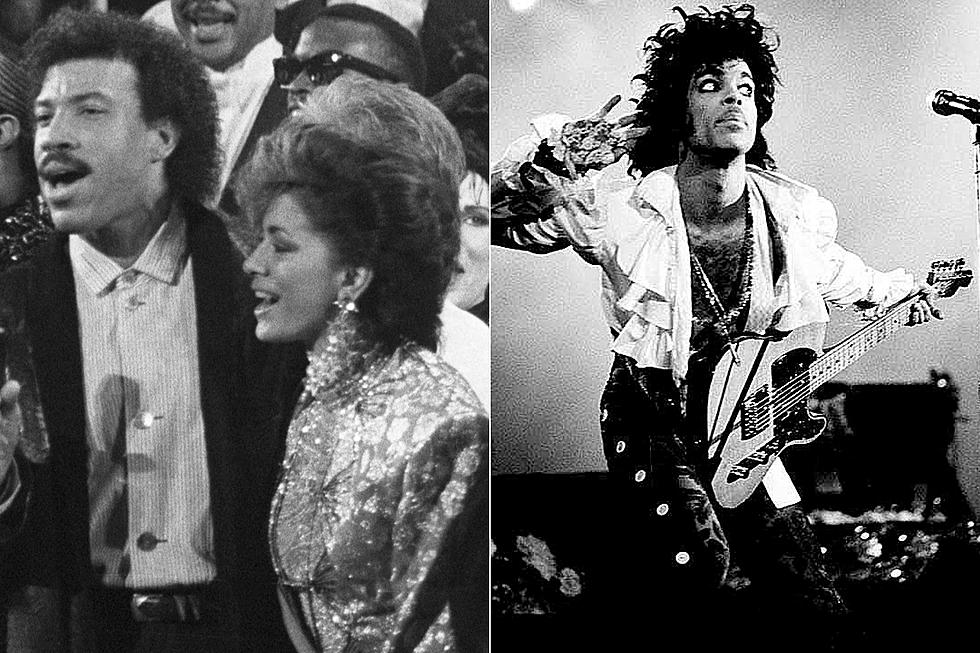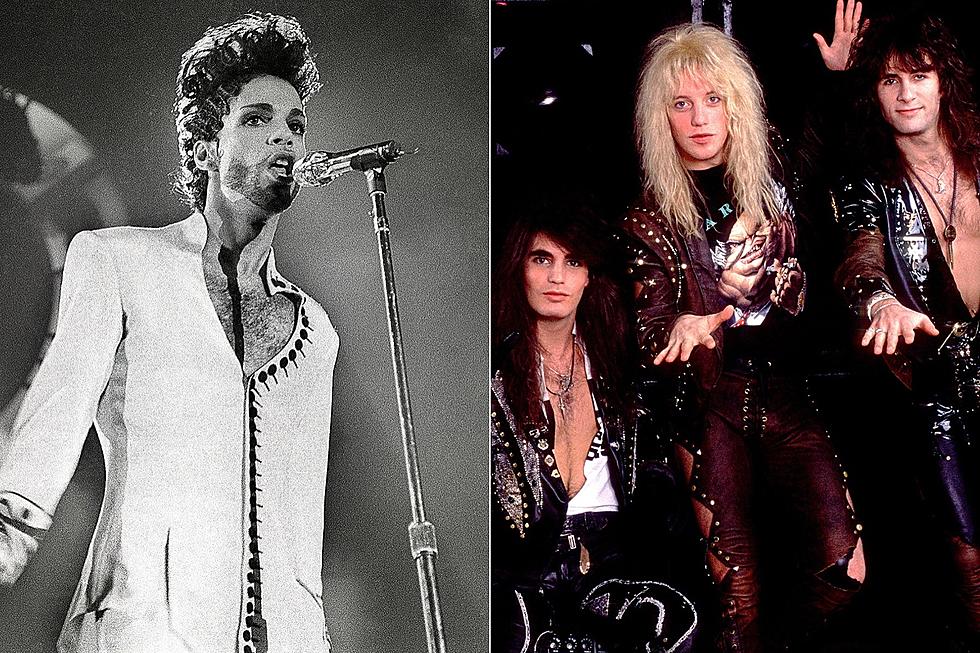
How Prince Returned to the Mainstream With ‘Diamonds and Pearls’
Diamonds and Pearls came together during a weird time – for Prince, and for music in general.
After his critical stumble on Graffiti Bridge, Prince was in need of a hit. "He was the greatest live performer alive, right up there with [Mick] Jagger," former co-manager Randy Phillips later told Rolling Stone. "But as far as recording new material, he was in an odd creative space. It's almost as if he lost his mojo for songwriting."
More than that, however, Prince seemed to have finally recognized that the culture had shifted: Hip hop and an R&B variant dubbed New Jack Swing were the dominant sounds of the day. The multi-platinum Diamonds and Pearls, released on Oct. 1, 1991, leveraged that zeitgeist to put Prince back on top again.
"We slowly watched it come into shape: lyrically and the influence of modern black soul, sort of hip hop," newly installed drummer Michael Bland told Rolling Stone. "He was really trying to still be him and navigate through that whole early-'90s phenomenon."
In keeping, this album hasn't necessarily aged as well as his other best-known records. Diamonds and Pearls can sometimes seem hopelessly trapped in its own era. Still, there's no denying the album's best moments – among them "Cream," his fifth No. 1 single; "Gett Off"; the title track; and "Money Don't Matter 2 Night" – despite the occasionally dated approach.
Prince, of course, quite famously dissed hip hop, only to change his mind. He had already referenced the nascent New Jack Swing movement on Graffiti Bridge's "Round and Round," with Tevin Campbell. But Diamonds and Pearls capitulated entirely, as Prince began to prominently feature rapper Tony Mosley in his latest band, the New Power Generation. Deep cuts like "Jughead" and "Push" were so contemporary as to become instantly fossilized.
He was leaving nothing to chance. Prince became a relentless public presence even before this studio project arrived, playing industry-type gigs, one-off talk shows and – most famously – the MTV Video Music Awards, where he offered "Get Off" while wearing ass-less pants. He even did a video EP, a label-pushed promotional tool that Prince was often reluctant to use.
Watch Prince Perform 'Cream'
The music certainly reflected that determinedly conventional approach. "You know when you buy someone's record," Prince proudly told Details in 1991, "and there's always an element missing? The voice is wrong or the drums are lame, or something? On mine, there's nothing missing." Diamonds and Pearls was not meant to challenge his listeners, only to raise his profile again.
Prince didn't make another canny raid on the vault, as was so often the case. Instead, these 13 songs were written and recorded with the New Power Generation over the course of a year and half. "All my last records have been connected to films," Prince told Details. "This is just my music."
The album – which became the first since 1986's Parade to be co-credited to a band – came together organically, in scattered bursts of creativity. The departures of keyboardist Dr. Fink and guitarist Mike Weaver led to the arrival of several fresh faces. Levi Seacer Jr. moved from bass to guitar, as Prince added Mosley, keyboardist Tommy Barbarella, bassist Sonny Thompson and the Hornheadz brass section to a lineup that featured Bland and singer-songwriter Rosie Gaines.
"Actually, how it happened was: Levi Seacer, the guitar player, he was in a band of mine for about three years," Gaines told BET's Donnie Simpson in 1995, laughing. "Then Sheila E. stole him out of my band, and Prince stole him out of Sheila's band." Prince initially heard Gaines while she was participating in a demo session with Seacer, and he offered her a position in the New Power Generation.
Another month went by, as Prince continued refashioning his backing band, and Gaines started to get antsy. "All of a sudden, there was a call at my mom's house," Gaines added. "She said, 'Somebody is on the phone, saying he's Prince.' My mom didn't believe it. I get on the phone, and there he is. ... It happened so fast. You're never prepared for that sort of thing."
Watch Prince Perform 'Money Don't Matter 2 Night'
That's the way it was with Prince. When he settled on a different direction, Prince simply turned on a dime. He initially contacted Seacer about joining on a Friday; their first rehearsal was set for Monday. "He's no notice," Seacer marveled in a 2018 talk with the Duluth News Tribune. "It's either yes or no – and you don't say no."
The NPG's earliest rehearsals could easily turn into grueling nine-hour treks. "It was repetitive, nonstop intensity," Thompson told the Minneapolis Star Tribune in 2016. "At the drop of a hat, we had to be able to play any song he'd throw at us. We would do recording sessions all day, and then he'd call us up and say, 'Let's play tonight.'"
Together, the New Power Generation helped take Prince in a new direction – back to the mainstream. The title track, a showcase for Gaines, was the portrait of accessibility, recalling the Philly soul of Thom Bell – but in a modern, very polished production style. "Cream" attempted to reanimate the nervy sensuality of "Kiss," without the edges. "Money Don't Matter 2Nite," a sharp commentary on materialism and warmongering, was simply gorgeous.
"There was so much music going around," Barbarella told Rolling Stone in 2016. "We never knew what we were doing. You never knew if it was a Prince song or for someone else. I remember recording half an album in one day, finishing it the next day, and later realizing it was for Carmen Electra. Diamonds and Pearls was like that. We didn’t know what that was. And he probably didn’t either at that time; it was just flow. That's what he wanted Paisley Park to be. He wanted this creative atmosphere where he would just actualize whatever he thought of. And he certainly did."
This being Prince, however, he didn't stay in this comfy creative place for long – and his chart positions reflected that. As he once again challenged his own muse, all while engaging in a furious battle with his label, Prince's record sales inevitably sagged. He didn't have a better performing Billboard album until the '00s.
Prince Year by Year: 1977-2016 Photographs
More From Ultimate Prince









